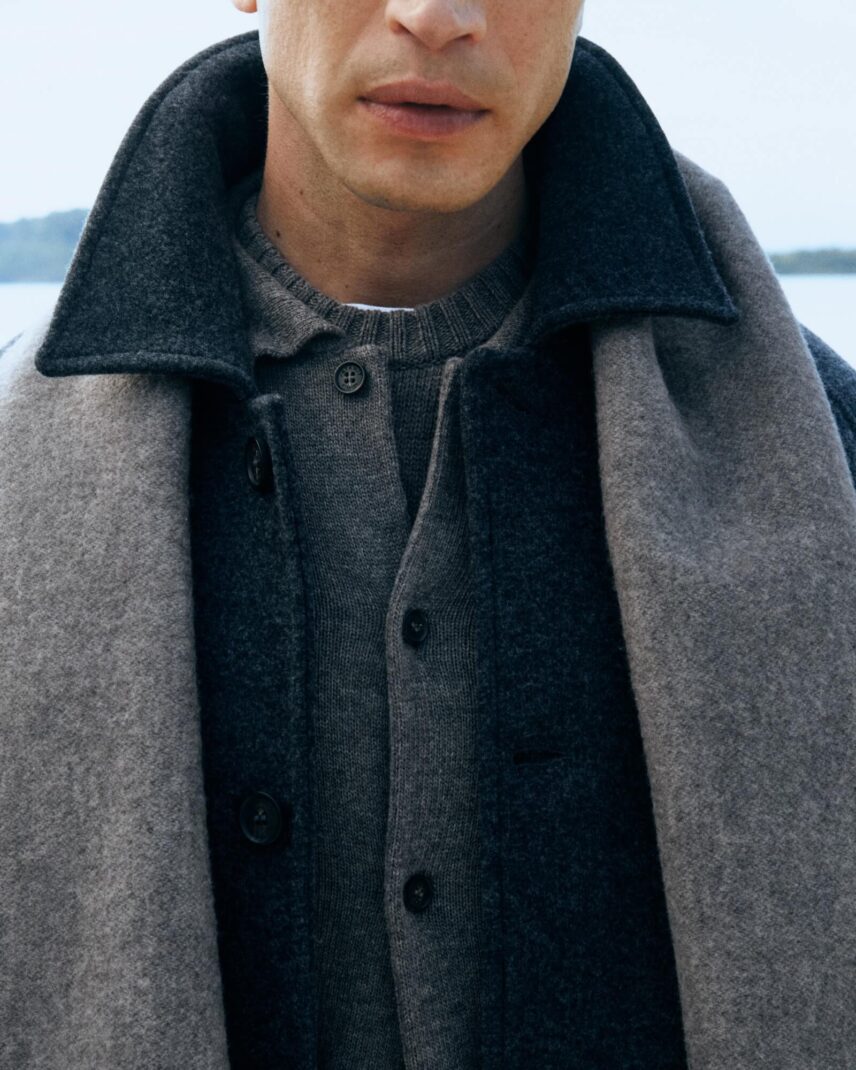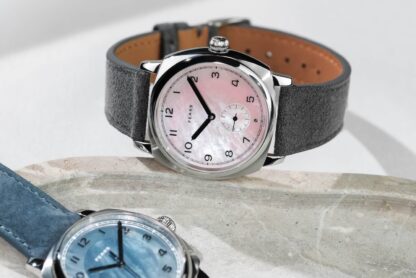This story originally appeared on the Gents Cafe Newsletter. You can subscribe here.
A sweater worn for a decade. A jacket mended instead of discarded. What was once second nature to our grandparents has become a rarity today.
Alessandro Lovisetto founded Artknit Studios to bring those values back into focus—stripping away the superfluous, giving voice to artisans too often hidden, and creating knitwear that endures in both form and meaning. In doing so, he has offered a refreshingly honest perspective on what luxury, transparency, and responsibility can look like in fashion.
In this Brand Talks interview, Alessandro, Founder & CEO of the brand, invites us to rethink what “buy less, buy better” can mean for our wardrobes—and our lives.
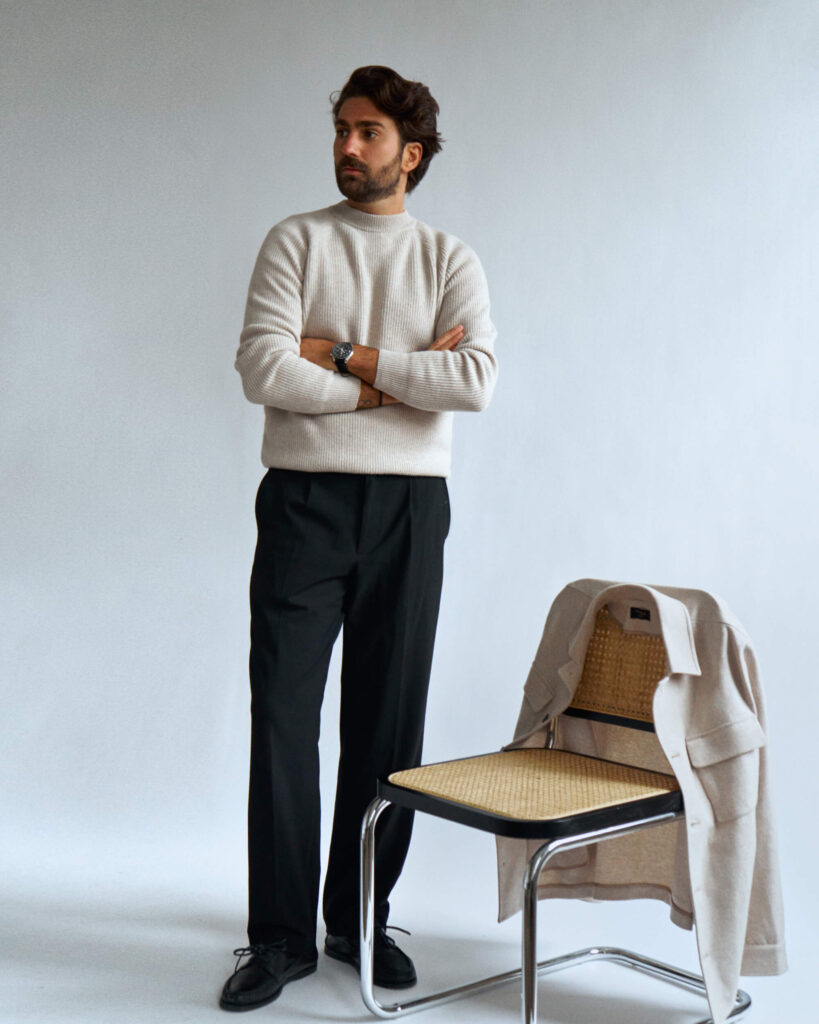
What is your earliest memory of knitwear that still stays with you today?
I was eight years old when I first stepped into my grandfather’s spinning mill. The smell of wool was unmistakable—damp, warm, almost alive. I wandered among bales of tops and noisy machines, amazed that from such raw material finished garments could be created, ready to travel all over the world. That sense of wonder has never left me. It was then that I understood the value of transforming a fiber into something tangible, beautiful, and useful.
Over time, I realized that there was too much distance between those who produce and those who buy: too little awareness of the work, the materials, and the hands behind each garment. That is why, with Artknit, I wanted to focus precisely on this: to create a direct connection, remove what is superfluous, and make visible what usually remains hidden. For me, it was essential to bring the product and its makers back to the center, and to build a more authentic relationship between those who create and those who wear.
For me, it was essential to bring the product and its makers back to the center, and to build an authentic relationship between who creates and who wears.
Artknit works closely with small family-run workshops across Italy, placing craftsmanship at the heart of the brand. What have you learned in those ateliers that you didn’t know before starting the company?
I’ve learned to slow down. To respect the rhythm of quality—one set by the hands, not by the market. Before starting Artknit, I thought innovation was only about technology and vision. Then I discovered a quieter form of innovation, built on gestures repeated with precision: like the person who has worked on the same machine for thirty years and can recognize a mistake by touch alone, or read a knit as if it were a text.
In those workshops, I realized that real value lies not only in the finished product, but in the skill and discipline that go into making it every day. When quality, care, and responsibility are not the exception, but the standard.
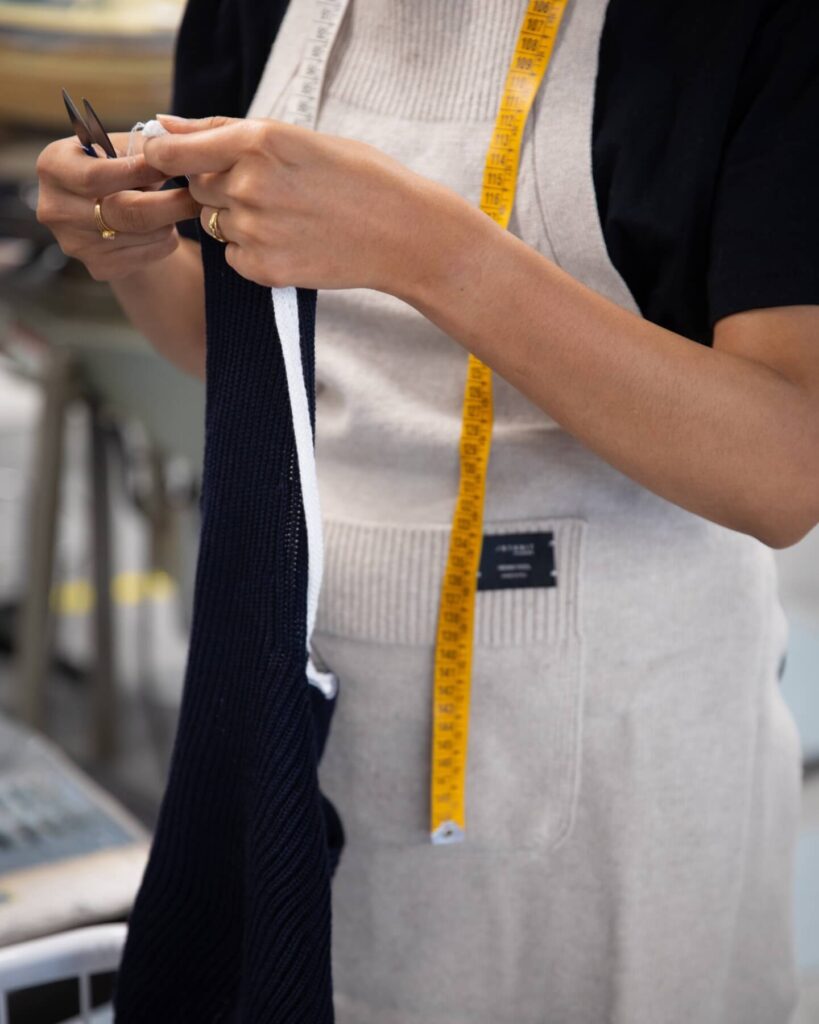
Your work gives voice to artisans whose craft is usually invisible. What story from one of your makers has stayed with you and perhaps changed how you see your own role?
What strikes me every time is not a single story, but the paradox we live in: Italy has one of the most skilled textile supply chains in the world, and yet for years it remained hidden behind other people’s labels. That’s why our work today is also cultural: we need to shed a light onto the value of what is made well—with time, with skill, with care—values that fast fashion has eroded, turning clothing into yet another disposable thing.
What was once normal for our grandparents—a sweater that lasted ten years, a jacket that was repaired—is now almost an exception for younger generations. With Artknit, we try to make those values desirable, understandable, and accessible again. It’s not a choice driven by nostalgia, but by the will to build a concrete, responsible, and contemporary alternative.
Your collections avoid trends, aiming for timelessness. How do you decide when a design feels “complete” and ready to last beyond seasons?
I believe a garment is truly complete when it becomes a natural choice—something you reach for often, in different contexts, and that continues to work over time.
We’re not interested in chasing novelty, but in creating pieces that withstand both aesthetic and physical wear. Clean lines, solid materials, and construction that holds up even after dozens of washes are the three essential ingredients to achieve that.
Today more than ever, it’s important to feel at ease at every moment of the day—from the office to dinner, from travel to a formal event—without having to change outfits each time. That’s why we focus on essential versatility, allowing each piece to accompany people in their lives, rather than just dressing them for an occasion.
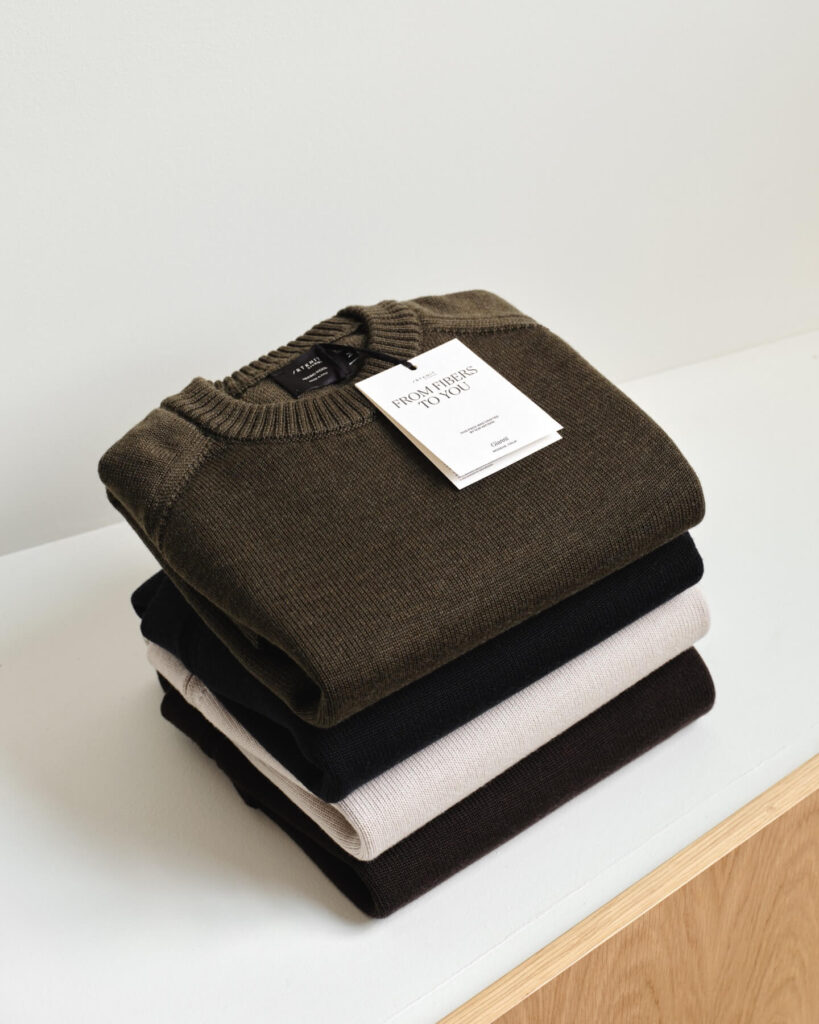
Sustainability can feel abstract. How do you translate it into something tangible and immediate for your customers?
We’ve agreed to stop using the word “sustainability” since it has become too generic, often stripped of real meaning. Instead, we prefer to frame a broader conversation and talk concretely around choices, method, and impact. Our work is about creating fewer products, made better, and with the lowest possible impact.
We start from materials: we use only natural yarns, selected for their traceability, durability, and reduced impact. We avoid mixed fibers that pose an issue of disposability, and we choose suppliers we know and have worked with for years. Our supply chain is short, entirely within Italy, and under our direct supervision. This allows us to cut unnecessary transport, maintain constant relationships with the workshops, and know the people behind every production step.
We also assess the life cycle of each garment to understand concretely what the best choices are—what type of yarn to use, where to produce it, how to reduce waste and consumption.
For our customers, all of this becomes tangible when they can see where and by whom a garment was made, how it was designed, and why it was created in a certain way—and, above all, when they realize it lasts, can be repaired, and continues to hold value over time.
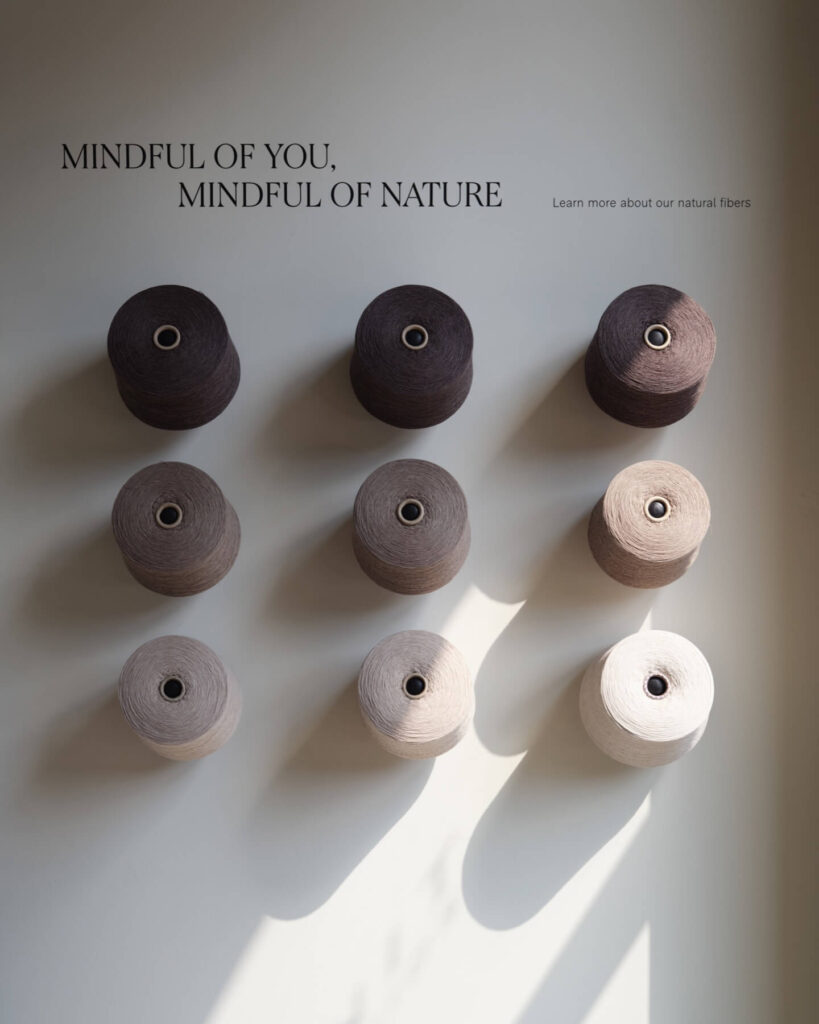
Transparency is central to Artknit. Beyond facts and data, what does transparency mean to you on a human level?
For me, transparency means not only having nothing to hide—but above all, nothing to oversimplify. It is about telling the truth, even when it is technical, complex, and full of steps most people never see. It means explaining why a garment costs more, why it takes weeks to produce, and why we do not run out-of-season sales. But more than that, it is an attitude: opening doors, answering questions, and showing what usually remains behind the scenes.
A customer once asked why one of our cotton sweaters cost more than a similar one he had seen elsewhere. We didn’t answer with a slogan, but with the story. We explained that our cotton is Egyptian Giza—among the rarest and finest in the world—grown without pesticides on the fields owned by our partner mill. A level of control and care that even the most renowned brands often cannot guarantee.
Then we described the making process: 18-gauge, as fine as a fabric, hand-linked stitch by stitch by Antonella—who has thirty years of experience in knitwear—and carefully knitted for hours to avoid even the smallest imperfection.
He listened in silence, then said: “To think that for many of the garments in my wardrobe, I don’t even know where they come from. This one, instead, feels almost like a privilege to own.”
That, to me, is transparency: it is not a marketing stunt, it is respect—for those who make, for those who wear, and for those who choose to give value once again to things made well.
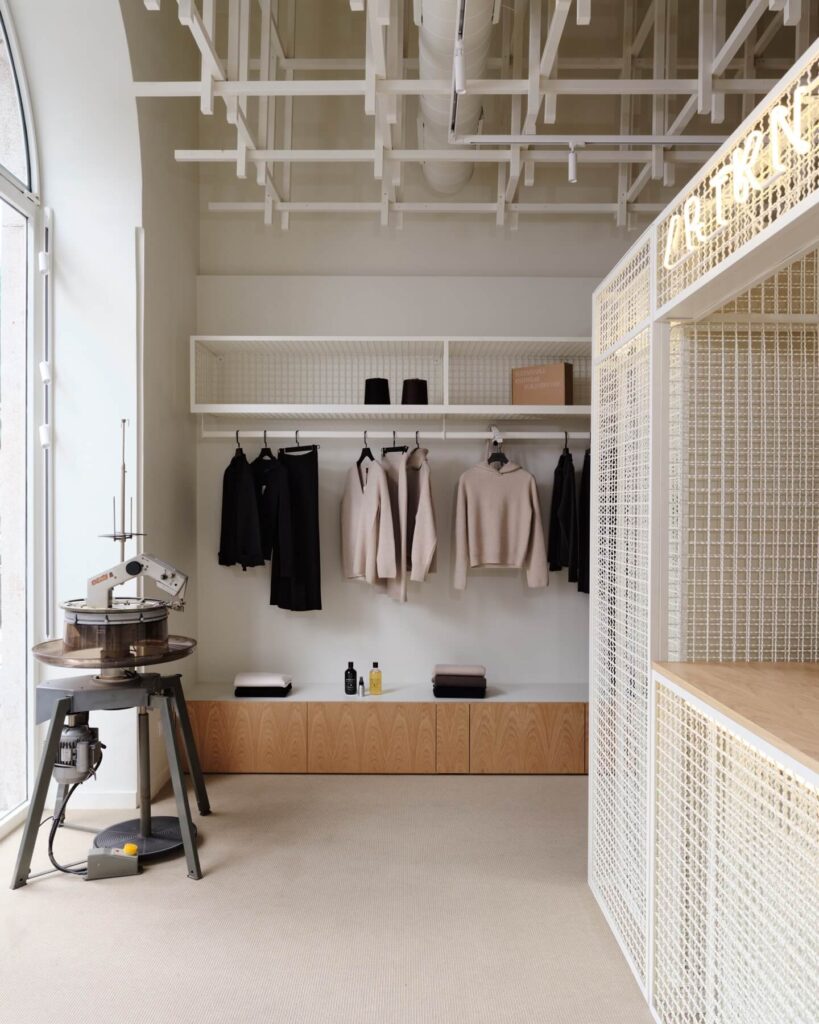
In your view, what does “luxury” mean today and how does Artknit embody or challenge that definition?
Today, true luxury is no longer about excess or display. It is about time. The time it takes to do things well, the time one can dedicate to choosing carefully, to learning, to using with intention.
For us, luxury means being able to know where a garment comes from, who made it, and how long it will last. It is wearing something that doesn’t need to shout to be noticed. In this sense, Artknit does not chase traditional luxury—it quietly challenges it. We offer garments without logos, but with complete traceability. Without forced seasonality, but with real durability. For many, luxury is still synonymous with exclusivity. For us, it has become synonymous with awareness.
For us, luxury means being able to know where a garment comes from, who made it, and how long it will last. It means wearing something that doesn’t need to shout to be noticed.
Looking ahead, if someone were to wear an Artknit piece 20 years from now, what do you hope they would feel?
I hope it conveys a sense of continuity—that it still has something to say, even if the world around it has changed.
I would like it not only to have “aged well,” but to have accompanied moments of life, travels, and relationships. To have gained value not only because of how it was made, but for the memories somebody created while wearing it.
And perhaps, when putting it on, that person remembers why it was chosen: not out of impulse, but out of conviction.
If in twenty years one of our garments can still express care, simplicity, and authentic beauty, then we will have done our work the right way.
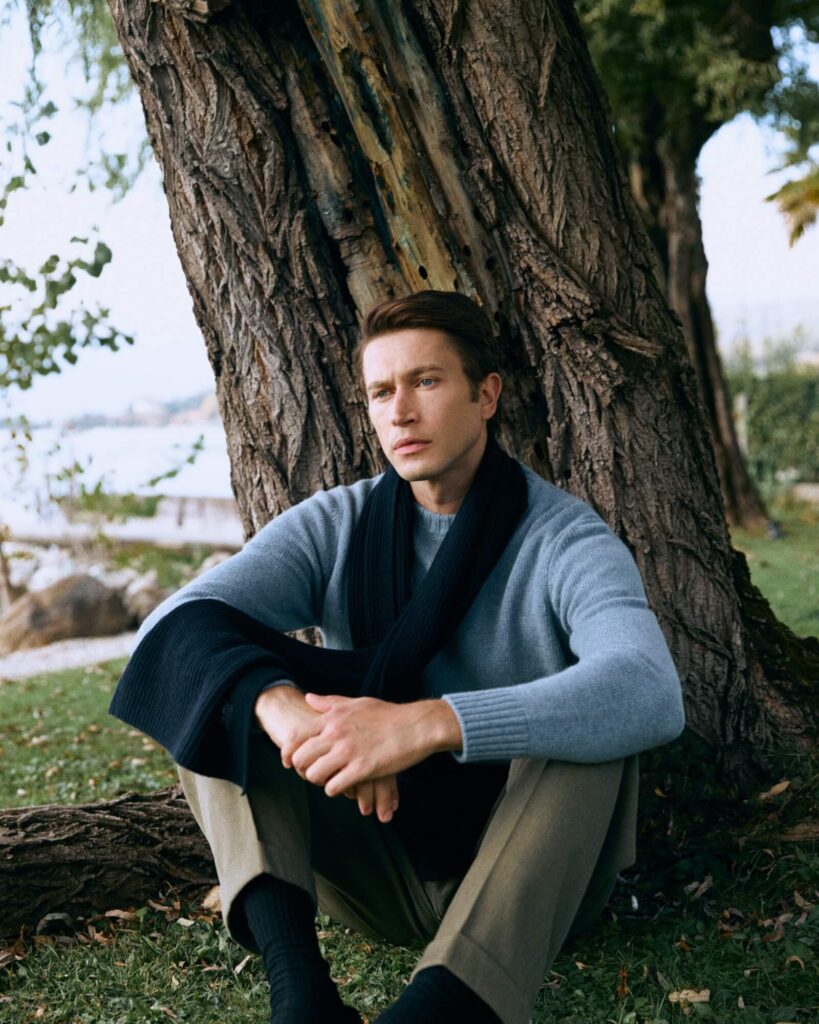
If you had to tell the story of Artknit through one single piece, what would it be and why?
It would be the Woolen Ribbed Raglan Sweater. It’s our icon: crafted from 100% extra-fine Merino wool, it embodies everything we stand for: timeless design, natural fibres, and the real Made in Italy.
The yarn is spun and dyed in Biella, the heart of Italian wool craftsmanship — where I was born and where generations of artisans have passed down not just techniques, but values. The sweater is then knitted a few kilometres away from Milan, in a family-run atelier that commits to making things properly.
What makes it special isn’t just its softness, but the balance of the piece. The mock neck adds structure without stiffness. The ribbed cuffs and hem give weight and elegance. It’s the kind of garment that feels like it was always part of your wardrobe, even when it’s brand new.
There’s a customer story we hold close: he’s an architect from New York, someone with an eye for proportions, textures, and honest materials.
He bought the sweater online during the pandemic, and wrote to us weeks later saying: “I haven’t taken it off since. It’s become my second skin. It’s not just beautiful — it’s true. It’s what I always imagined Made in Italy should be. Not a marketing line. Not a label. But something where you can feel the human hands, the time, the care. That sweater is proof that Italy still knows how to make things that last.”
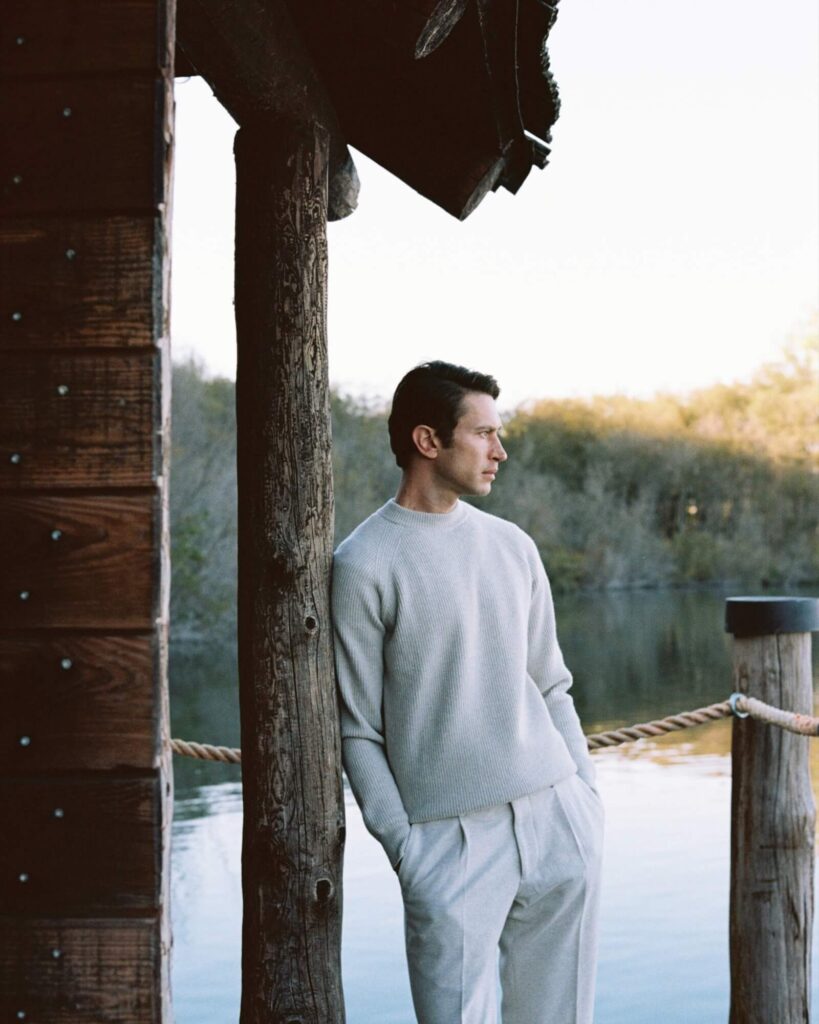
The motto “Buy Less, Buy Better” also speaks to a slower rhythm of life. Outside of work, where do you find slowness most rewarding?
I find it in small habits that have become part of my balance. In the morning, for example, I give myself at least half an hour without screens or notifications. It helps me start the day with a clear mind, without immediately slipping into reactivity.
In my free time, I take on activities that allow me to truly disconnect: gardening, cooking, or even just sharing a glass of wine with a friend I haven’t seen in a while—possibly leaving my phone in the car to avoid being distracted. In the evening, before going to bed, I make a rule not to scroll on my phone but to read a few pages with a candle lit. It helps me end the day in a different way.
These are simple habits, but they make a real difference, and when work requires constant input and quick decisions, having moments free from external stress is essential to remain clear-headed.
There is also another kind of slowness I consider fundamental: slowness in relationships. Giving time to people and to ideas, not forcing them. Letting them mature. This applies to projects, but also to life. In the end, “slow” does not mean doing less—it means doing better, with more intention and less noise.
And if I may share something that has helped me, there are three books I always keep close and recommend to anyone who, like me, leads busy days and sometimes needs to slow down. They are not solutions, but tools, and sometimes even a single line, read at the right moment, can change the way you live a day.
Four Thousand Weeks – Oliver Burkeman
It makes you reflect on the fact that time is finite—and precisely for this reason, precious. It helped me choose more consciously where to allocate my energy.
Digital Minimalism – Cal Newport
A simple yet powerful book to rewire our relationship with technology. It taught me that disconnecting is not giving up—it is protecting attention and presence.
L’arte di essere fragili [The Art of Being Fragile], essay – Alessandro D’Avenia
More poetic, more personal, but profound. It reminded me that slowing down also means accepting that not everything can be controlled—and that this is perfectly fine.





